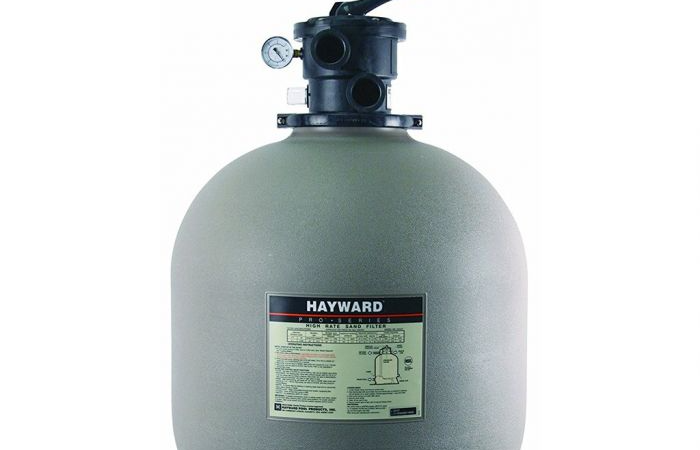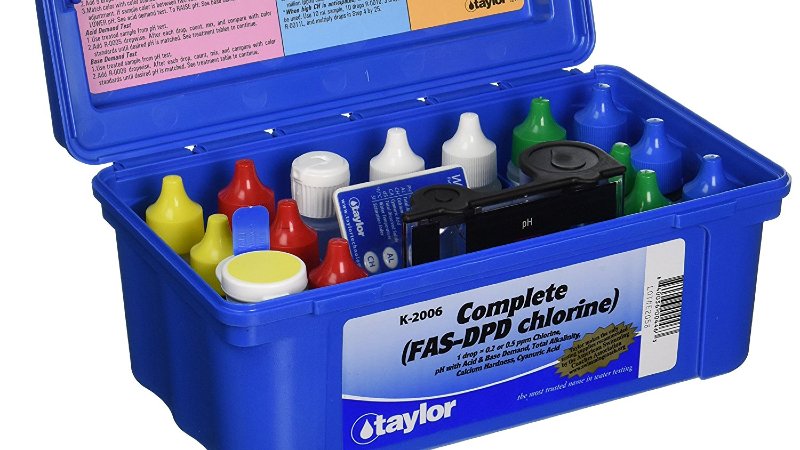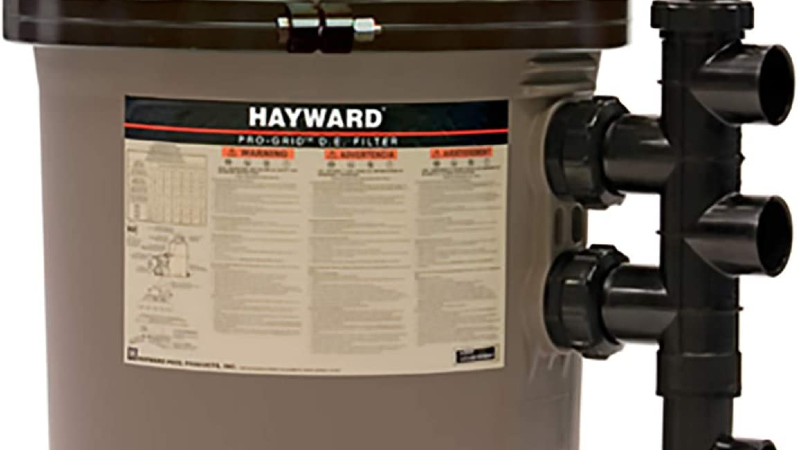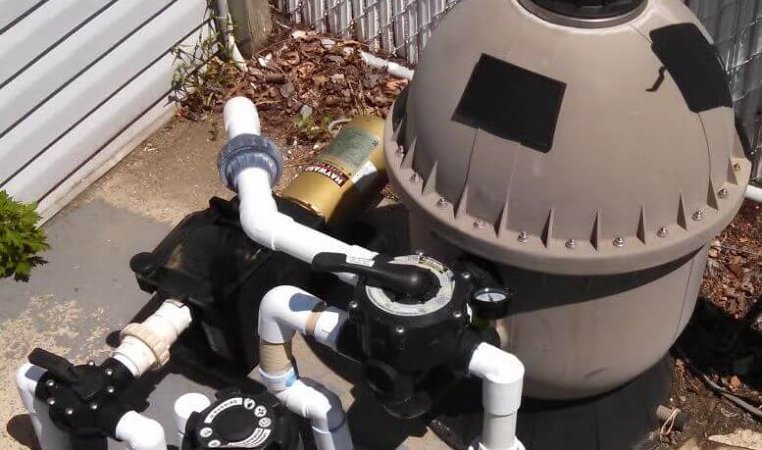- Home
- Maintenance
- Change Pool Filter Sand
12 Tips On How To Change Pool Filter Sand
Every so often you're going to need to change your pool filter sand. How often is debatable. Some say every 5 - 7 years, and some say every 20 years. Nothing lasts forever, and this includes your pool sand. It does eventually wear out. The sand particles become worn and won't capture contaminates, dead algae, and bacteria as it did when it was newer.
Old sand can also cause channeling, which is when the water goes around the sand and enters back into the pool as dirty unfiltered water. You'll start to notice your pool water is not as clean and clear as it once was, or requires more backwashing than usual.
Either way, it's probably time to change your pool filter sand.
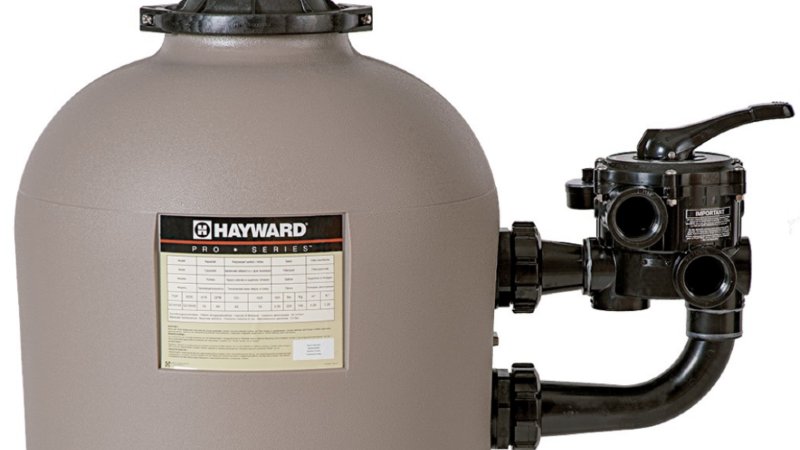
What Is Pool Sand?
Pool filter sand, or silica sand, is a unique kind of sand used specifically for pool sand filters. It's specially made and graded to trap small particles such as bacteria and algae and is usually sold in 50lb. bags that can be found in any pool store.
Pool sand is not the same as play sand. Some pool owners might be tempted into using play sand due to its cheaper cost, but they are not the same. Your sand filter was created to use a specific type of sand, and it's recommended that sand filter owners stay with this recommendation.
What Are Different Types Of Pool Filter Sand Media?
You do have some choices when it comes to your sand filter media. And that's a cool part of having a sand filter.
Silica Sand
Silica sand has been used for filtration purposes for eons, but not all pool sand is created equal. When it's time to replace your pool filter sand, you need to get the right kind. Always check your filter's recommendation before changing your pool sand, but most sand filters can accommodate Number 20 silica sand which can filter down to 20 microns and is an excellent choice for many sand filters.
Zeolite
Zeolites are a combination of volcanic rock and ash layer mixed with water. Zeolite makes a good filter media because it's microporous and ideal for catching large and small debris.
Zeolite can also filter down to 5 microns, which is very similar to a D.E. filter, and is superior to silica sand. The downside of Zeolite is it's very dusty. This dust can get into your pool if a thorough backwash is not performed when it's initially added to a sand filter. Another negative is Zeolite's higher initial up-front cost. It can be 2 - 3 times more expensive than silica sand. The upside is Zeolite can last a bit longer than pool sand, so you can go longer between pool sand changes.
Recycled Glass
Glass is environmentally friendly and works fairly well. I found that glass media can give your sand filter superior filtering and it lasts longer than regular silica sand.
One benefit is glass doesn't need to be backwashed as frequently, so there's a good savings of water and chemicals. Another benefit is glass can filter down to 5 - 10 microns, which is about the size of a white blood cell. The negative, just like Zeolite, is the higher up-front cost. But, being glass is a high quality product, you can go longer between sand filter changes.
Why Should I Change My Pool Sand?
How often to change your pool sand is really an area of debate. Many say every 5 - 7 years, while some may say every 10 years, or even longer. Here's the truth: it depends on your situation and your pool. A heavily used pool with lots of debris and backwashing in Florida will require more frequent sand changes compared to a lightly used pool that sees a swimming season of only 3 - 4 months. A sand pool filter that doesn't see much action might be able to stretch its changing of the guard every 15 years.
The bottom line is this: change your sand when you notice the water is not as crisp and clean as it once was, or if there's something physically wrong with the sand, such as channeling. It's also good practice to inspect the sand every 5 - 7 years to see its condition. If you've tried everything else, including inspecting the sand, balancing the chemicals, sweeping, vacuuming, and the water isn't getting better, it might time to change your pool filter sand.
How To Change Pool Filter Sand
Once you've determined your filter sand needs to be changed, you'll need to grab some tools to make the job a little easier.
- Filter media of your choice (silica sand, Zeolite, or glass)
- Shop Vac
- Extension cord
- Screwdriver
- Hacksaw (just in case you need to cut the pipes)
- Garden hose
- Knife or box cutter
- Tape measure
- Plastic grocery bag or duct tape
- Large plastic cup
1. Turn Your Pool Pump Off
Make sure you turn the pump motor off. For added protection, turn the power off at the circuit breaker to the pump motor.
2. Drain The Filter and Remove The Multiport Valve
Remove the bottom drain on your filter and allow the water to fully drain out. Next, remove the multiport valve by unscrewing the unions that connect the pipe's "PUMP" and "RETURN" ports. You may need to cut the pipes if your filter does not have unions or couplings. Just make sure to leave enough space to install unions or couplings.
3. Cover The Sandpipe
Take your plastic bag and cover the standpipe, then duct tape over it for added protection. You don't want any sand going into the standpipe.
4. Remove The Sand
Take your Shop Vac or other device you may have and remove as much sand as you can. A Solo red plastic cup works great for getting out what your Shop Vac can't reach.
5. Inspect The Laterals
Slowly pull up on the standpipe and lateral assembly. Carefully rotate the laterals upward so they will clear the hole. Once the laterals are out of the tank, rinse them off and carefully inspect the standpipe and laterals. Replace any laterals that are broken. If a broken lateral is overlooked, sand will be returned back into the pool and the entire process of sand removal must be done again.
6. Rinse Out The Tank and Replace the Drain cap
Now that the tank is empty, take your garden hose and rinse the filter out, allowing the water to run through the drain opening on the bottom of the tank. Once the filter tank is rinsed, replace the drain cap and tighten it down.
7. Fill The Tank Half Way With Water and Replace The Laterals
Make sure the filter tank is correctly positioned on the foundation or pad. Fill the tank 1/2 way with water and replace the laterals. Flip the laterals down and correctly position the standpipe.
8. Add New Sand
Lift the bag of sand onto the filter, cut a small opening at the corner of the bag, and slowly pour the new sand into the filter. Repeat this process until you have enough sand for your size filter.
9. Fill The Tank With Water
Fill up the tank with water to within 6" of the top and smooth the sand with your hand. Using your measuring tape, measure from the top of the sand to the top of the filter. This area is called the "freeboard" and is normally about 6" - 8", but always refer to your owner's manual for this measurement.
10. Replace The Multiport Valve and Fittings
If your multiport valve has an O-ring on the bottom, now would be the perfect time to inspect it. Better yet, go ahead and replace it just to be safe. They're inexpensive and a great pool filter maintenance procedure.
Lubricate the O-ring with a silicone lubricant and place it on the underside of the valve. Remove the bag and tape from top of the pipe and slide the multiport control valve onto the standpipe. Check the O-ring to ensure it is correctly positioned. Fasten pipes back up.
11. Backwash and Rinse The Filter
With the pump motor OFF, turn the multiport valve handle to the "BACKWASH" position. Make sure your backwash hose is properly rolled out. Prime the pump, then turn ON the pool pump. Make sure you have your bottom drain or skimmer valve(s) open. Run the pool pump for 2 minutes after you have a steady flow of water out the backwash hose.
This flushes loose sand, dust, and other impurities out of the sand media. Turn the pool pump OFF and turn the multiport valve handle to "RINSE". Turn ON the pump motor for 1 minute to rinse the lines. Turn the pool pump OFF and turn the valve handle to "FILTER". Turn the pool pump ON. Note the pressure gauge reading. This is your clean sand filter pressure.
12. Run the Pool Pump On Filter
Run the pool pump for a couple of minutes to make sure no sand enters back into the pool. Sand is very dirty and it's common for a smaller particles to get past the laterals and enter the pool through the returns. Don't be alarmed if this happens. Sweep the sand into a pile and vacuum to WASTE. The sand will eventually settle down.
You're A Pool Sand Filter Changing Pro
Once the new pool filter sand has settled and everything is up and perfectly running, all you need to do is keep an eye on your filter. When filters are taken care of, and you change the sand in your pool filter on a regular basis, little maintenance is required for them to run at optimal efficiency. Give your sand filter a friendly pat and say until we meet again in 5 - 7 years.

